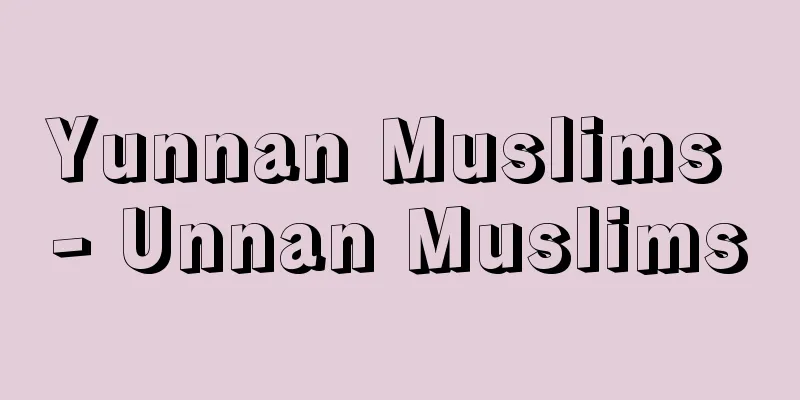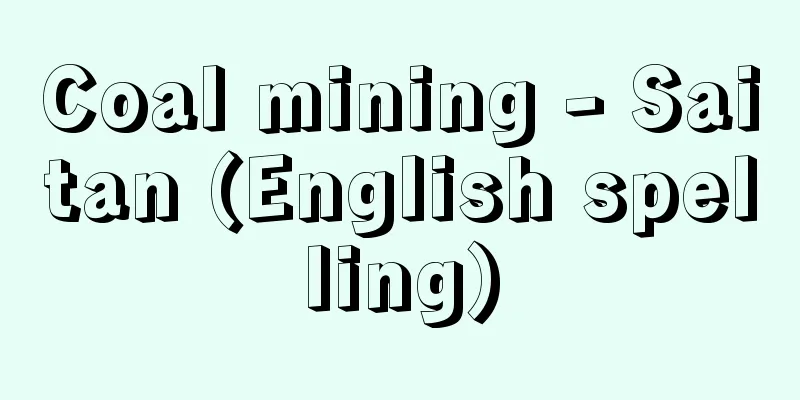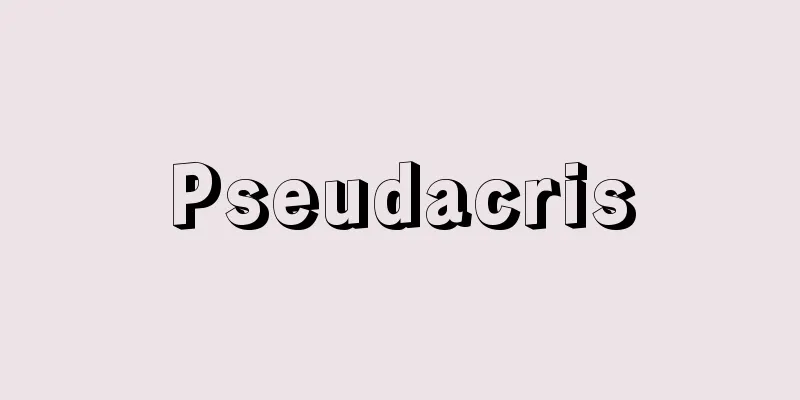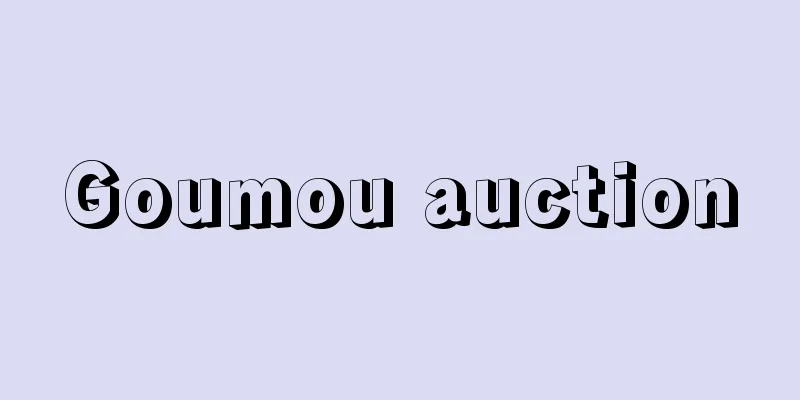Kiribati - Republic of Kiribati (English spelling)

|
An archipelago nation scattered across the central and eastern Pacific Ocean. It is the only country in the world with land in all four hemispheres. Official name: Republic of Kiribati. It gained independence from the UK on July 12, 1979. Population: 83,000 (1997 estimate), 98,045 (2009, World Bank). 90% of the population lives in the Gilbert Islands, centered on Tarawa Atoll, where the capital Bairiki is located. [Izumi Kobayashi] Nature and GeographyIt is made up of three island groups: the Gilbert Islands, the Phoenix Islands, and the Line Islands. Only Banaba Island (Ocean Island), at the western end, is a raised coral reef island that is over 80 meters above sea level, and the rest are atoll islands with an elevation of less than a few meters. It is 3,870 kilometers from Banaba Island to Christmas Island at the eastern end, so its exclusive economic zone is 3.55 million square kilometers, the largest among the Pacific island nations. However, its land area is only 730 square kilometers, which is about the same as Tsushima Island in Japan. Christmas Island, located in the eastern hemisphere, is on the same longitude as Hawaii, so in the past, the two islands used to have different dates within the same country, but in 1995, the parliament made a decision to move the date line east along the territorial line, making the date the same throughout the country. Recent archaeological and linguistic research suggests that Micronesians migrated to the Gilbert Islands in canoes from the Caroline Islands in the west around 2000 BC. As a result, Micronesian maritime culture flourished, inheriting traditions such as canoe building and navigation techniques, but there was also a significant influx of Polynesian culture from the east. Meanwhile, on land, the flat coral reef islands are poor in natural resources, and so self-sufficient village communities formed, surviving on coconuts, taro, yams, breadfruit and other foods. However, contact with Westerners began in earnest around the 18th century, and as Christianity and a monetary economy were introduced, traditional lifestyles gradually began to crumble. [Izumi Kobayashi] historyIt began with the landing of Captain Thomas Gilbert of the British Navy in 1788, and became a British protectorate in 1892, and a British colony as the Gilbert and Ellice Islands together with the neighboring Ellice Islands (now Tuvalu) in 1916. After that, Britain also incorporated the Phoenix Islands and the Line Islands into its colonies. When the Pacific War broke out in 1941, the Japanese army occupied Makin (now Butaritari) and Tarawa, but was annihilated in 1943 by the American army. After the war, Britain, which had regained colonial suzerainty, conducted nuclear tests on uninhabited Christmas Island from 1956 to 1958, and the United States did the same in 1962. In July 1979, the Polynesian Ellice Islands, which were also part of the colony, were separated and became independent. The name Kiribati is the local pronunciation of Gilbert. The Ellice Islands became independent and became Tuvalu in January 1978. [Izumi Kobayashi] PoliticsAfter independence, the country decided to remain a member of the British Commonwealth, but the government system adopted is a republic with a president as head of state. However, it can be said to be a hybrid of a parliamentary system, with three or four candidates selected from among the members of parliament, and the president chosen by a national referendum. The total number of members is 46, consisting of 44 elected members, the Attorney General, and the representative of the Lambie Island Assembly, and both the president and members serve four-year terms. The cabinet is made up of a maximum of 12 ministers, including the president and vice president, and local administrative officials are assigned to six districts across the country. The first president was Ieremia Tabai (1950-), who was 29 years old at the time. After serving three terms, or 12 years (1979-1990), he stepped down due to the constitutional provision that prohibits a president from being elected for a fourth term. Although the country is not particularly politically infighting, no president has served three full terms since the second one. As of March 2012, the current president is Anote Tong (1952- , in office 2003-), who is serving his third term. As a member of the Commonwealth of Nations, it has close ties with Australia and New Zealand, and as a member of the Pacific Islands Forum (PIF), it strives to maintain and strengthen friendly relations with the surrounding island nations. In November 2003, it severed diplomatic ties with China, with which it had had diplomatic relations until then, and established diplomatic relations with Taiwan. It continues to actively appeal to the international community in its own way, due to its interest in economic cooperation and recent global environmental issues. In 1999, it joined the United Nations. [Izumi Kobayashi] Economy and SocietyOriginally, the life of the islands was a non-monetary economy, self-sufficient on native plants such as potatoes and breadfruit, and fish and shellfish, but after the colonial administration began, a few wage earners appeared. In 1900, the British discovered that Banaba Island, a raised coral reef island, was covered in phosphate rock. Since then, mining has continued, and the resource was depleted by 1979, the year of independence. However, in 1968, the colonial government set up a fund made from profits from phosphate rock exports to prepare for securing government revenue after independence. As of 2012, the main sources of revenue for the government are the investment profits from this fund, fishing fees within the exclusive economic zone, and foreign aid. Tax revenue is not a major source of revenue because there is no significant industry in the country, and productive activities that support the lives of the people are limited to self-sufficiency in agriculture and fishing, and the export of some copra (dried endosperm of coconut fruit) and fish and shellfish. Many Kiribati people work as crew members on foreign fishing and cargo ships, and the foreign currency that they bring back and send back to their families, along with other people who work overseas, is the country's largest source of income. The economic indicators show that the GDP (gross domestic product) per capita is $1,890, but despite the lack of domestic industry, the people's lives appear to exceed their income figures thanks to the self-sufficient economy and remittances from overseas. The currency is the Australian dollar, with the country issuing only the subsidiary coins. The official languages are English and Kiribati, but the latter is used in daily life. The majority of the population is Micronesian, and their religion is Christian, belonging to Catholic or Protestant churches. The government has encouraged people to move to Christmas Island on the east side, as the population has begun to concentrate in the capital area and the living environment has deteriorated. As a result, the population of this previously uninhabited island has exceeded 5,000. Christmas Island is the world's largest atoll island (388 square kilometers) with a circumference of 160 kilometers, and is a three-hour flight from Hawaii. It is expected to be developed as a base for fishing and tourism. Compulsory education begins at age six and lasts for ten years. Primary school is seven years long, and secondary education can be completed in three years, but there is an additional two-year course for those who wish to proceed to higher education institutions. There is a branch of the University of the South Pacific (main campus in Fiji) in the country, as well as training schools for fishermen and teachers, and students with excellent grades can receive scholarships to study at the main campus of the University of the South Pacific or at a university in New Zealand. [Izumi Kobayashi] Relations with JapanBefore the Pacific War, the Japanese Nanyo Trading Company had a representative in Butaritari (Makin). During the war, it became a fierce battleground between the Japanese and American armies. In terms of economic relations, Kiribati's exports to Japan, mainly fish and shellfish, are only 580 million yen per year, while imports from Japan amount to 2.6 billion yen (2010), which is small. With the cooperation of Japan, a fishing school for "single-line bonito fishing" was established, and Japan dispatches instructors, and graduates work on Japanese or Taiwanese fishing boats, so Kiribati has a deep relationship with Japan in the fishing industry. The National Space Development Agency (now the Japan Aerospace Exploration Agency) once had a satellite tracking station on Christmas Island, but as of 2011 it is to be rented as a temporary observation station when geostationary satellites are deployed. Japan established diplomatic relations with Kiribati at the same time as its independence in 1979, and the Japanese Embassy in Fiji is accredited to the country. As of 2009, Japan has provided a total of 21.224 billion yen in grant aid and technical cooperation. [Izumi Kobayashi] "Mauri Kiribati - Today, the Republic of Kiribati" by Yoshinori Gun (1996, Kindai Bungeisha) " The Country of Kiribati" by Hiroyuki Sukeyasu and Kentaro Ono (2009, Eight Publishing) [References] | | | | | [Additional information] |"> Kiribati flag ©Shogakukan Illustration/Shogakukan Creative "> Kiribati Location Map Source: Shogakukan Encyclopedia Nipponica About Encyclopedia Nipponica Information | Legend |
|
中部・東部太平洋にまたがって散在する群島国家。東西南北すべての四半球に国土が存在する世界唯一の国である。正称キリバス共和国Republic of Kiribati。1979年7月12日にイギリスから独立。人口8万3000(1997年推計)、9万8045(2009年、世界銀行)。人口の9割が首都バイリキのあるタラワ環礁を中心にしたギルバート諸島に居住している。 [小林 泉] 自然・地誌ギルバート諸島、フェニックス諸島、ライン諸島の三つの島嶼(とうしょ)グループで構成される。西端のバナバ(オーシャン)島だけが海抜80メートルを超す隆起サンゴ礁島で、その他は標高数メートル以下の環礁島ばかりである。そのバナバ島から東端のクリスマス島までは3870キロメートルもあるため排他的経済水域は355万平方キロメートルにもなって、その広さは太平洋島嶼諸国第1位を誇る。だが、陸地面積は730平方キロメートルで、日本の対馬(つしま)程度しかない。東半球に位置するクリスマス島はハワイと同経度のため、かつては同一国内で日付が異なっていたが、議会は1995年に領土線に沿って日付変更線を東に迂回(うかい)させる決定を下して国内同一日付とした。 近年の考古学・言語学の研究によると、紀元前2000年ごろに西方のカロリン諸島からミクロネシア人がカヌーに乗ってギルバート諸島へと移動してきたと推定される。それによって、カヌー建造技術や航海術などの伝統が引き継がれミクロネシア海洋文化が栄えたが、東方からのポリネシア文化の影響も少なからず流入している。一方、陸地では平坦なサンゴ礁島ゆえに自然資源に乏しく、ココヤシの実、タロ、ヤム、パンノキの実などを食料とする自給的な村落共同体社会を形成していた。ところが、18世紀ごろから本格化する西洋人との接触によってキリスト教や貨幣経済の導入が進むと、しだいに伝統的生活様式が崩れていった。 [小林 泉] 歴史1788年にイギリス海軍大佐トーマス・ギルバートThomas Gilbertが上陸したことに始まり、1892年に英国の保護領、そして1916年には隣接するエリス諸島(現、ツバル)とともにギルバート・エリス諸島としてイギリス植民地となった。その後、イギリスはフェニックス諸島、ライン諸島も植民地に編入。1941年に太平洋戦争が勃発(ぼっぱつ)すると、日本軍はマキン(現、ブタリタリ)、タラワを占領したが、1943年にアメリカ軍の攻撃にあい全滅した。 終戦後、ふたたび植民地宗主国に復帰したイギリスは1956年から1958年にかけて、さらにアメリカが1962年に、無人であったクリスマス島で核実験を実施した。1979年7月に、同一植民地でありながらポリネシア人の諸島であるエリス諸島を切り離して独立した。キリバスという国名は、ギルバートの現地語発音である。エリス諸島は1978年1月、独立してツバルとなった。 [小林 泉] 政治独立後もイギリス連邦に所属することとしたが、採用した政体は大統領を国家元首とする共和制である。ただし、議院内閣制との混合型ともいえるもので、国会議員のなかから3~4名の候補者を選出して、国民投票で大統領を決める。議員定数は選挙で選ばれた議員44名に司法長官とランビ島議会代表が加わり総計46名で、大統領、議員ともに任期は4年。大統領、副大統領を含め最大限12名の大臣により内閣が構成されており、そのほか全国6地区に地方行政官が配置されている。初代大統領となったのは、当時29歳であったイレミア・タバイIeremia Tabai(1950― )。3期12年(1979~1990)を務めたのち、憲法にある4選禁止規定に基づいてその座を退いた。国内政争がそれほど激しい国柄ではないが、二代目以降で3期を全うした大統領はいない。2012年3月時点での大統領はアノテ・トンAnote Tong(1952― 、在任2003~ )で3期目。 イギリス連邦加盟国としてオーストラリア、ニュージーランドとの関係が深く、太平洋諸島フォーラム(PIF)のメンバー国として周辺島嶼諸国との友好関係維持・強化に努めている。また、2003年11月には、それまで国交関係にあった中国と断交して台湾との外交関係を樹立するなど、経済協力や近年の地球環境問題への関心から、積極的に国際社会へ独自のアピール活動を続けている。1999年には国連加盟を果たした。 [小林 泉] 経済・社会本来の島々の暮らしは、いも類、パンノキの実などの自生植物と魚貝類の自給自足による非貨幣経済下にあったが、植民地行政が始まった後には若干の賃金生活者が出現した。1900年にイギリスは、隆起サンゴ礁島であるバナバ島が燐(りん)鉱石に覆われていることを発見。それ以来採掘を続けたため、独立時の1979年には資源が枯渇した。しかし植民地政府は、1968年から燐鉱石の輸出利益を基金化して独立後の政府財源の確保に備えた。2012年時点で政府財政となるおもな収入源は、この基金の運用益、排他的経済水域内の入漁料、外国の援助等である。税収が主要財源にならないのは、国内にみるべき産業がなく、国民生活を支える生産活動は自給的な農漁業と若干のコプラ(ココヤシの果実の胚乳を乾燥させたもの)や魚貝類等の輸出に限られるからである。キリバス人は外国の漁船や貨物船の乗組員として働く者が多く、そのほかの海外出稼ぎ者も含めて、彼らがもち帰ったり、家族に送金したりする、いわゆる外貨がこの国の最大収入源になっている。 経済指標にみる国民1人当りのGDP(国内総生産)は1890ドルであるが、みるべき国内産業がないわりには自給経済と海外からの送金のおかげで人々の暮らしぶりは所得値以上にみえる。通貨はオーストラリア・ドルを使用しており、補助通貨のコインのみキリバスが発行している 6歳から10年間の義務教育が始まる。初等レベルは7年制で、その後の中等教育は3年で修了できるが、高等教育機関に進学する者のためにさらに2年の追加コースが設けられている。国内に南太平洋大学(本校はフィジー)の分校のほかに漁船員や教員の養成学校があるが、成績優秀者は奨学金を得て南太平洋大学本校やニュージーランドの大学を目ざす。 [小林 泉] 日本との関係太平洋戦争前、ブタリタリ(マキン)に日本の南洋貿易会社が駐在員を置いていた。戦争中は日米両軍の激戦地となった。 経済関係では、キリバスから日本への輸出が魚貝類を主として年間5.8億円、日本からの輸入が26億円(2010)と小規模である。日本の協力で設立した「カツオ一本釣り」の漁船員養成学校があり、日本は講師を派遣、卒業後は日本や台湾の漁船に乗り組んで働くなど、漁業にかかわる日本との関係は深い。かつてクリスマス島に宇宙開発事業団(現、宇宙航空研究開発機構)の衛星追跡所が設けられていたが、2011年(平成23)時点では静止衛星投入時に臨時の観測所として借り受けることになっている。 日本は、1979年(昭和54)のキリバス独立と同時に外交関係を結び、駐フィジー日本大使館が兼轄している。また、2009年までの累積で212.24億円の無償資金協力・技術協力を実施した。 [小林 泉] 『郡義典著『マウリ・キリバス――今日は、キリバス共和国』(1996・近代文芸社)』▽『助安博之、ケンタロ・オノ著『キリバスという国』(2009・エイト社)』 [参照項目] | | | | | [補完資料] |"> キリバスの国旗 ©Shogakukan 作図/小学館クリエイティブ"> キリバス位置図 出典 小学館 日本大百科全書(ニッポニカ)日本大百科全書(ニッポニカ)について 情報 | 凡例 |
<<: Paulownia leaf - Kirihitoha
>>: Kirihashi (cone beak) - Kirihashi (English spelling) jacmar
Recommend
Keiko Naga
The title of a Japanese gagaku piece. It can also ...
Khaidu - Haidu (English spelling)
A nomadic hero who conquered Central Asia during ...
Comet Ikeya‐Seki
A new comet with a magnitude of 7 was discovered i...
City Girls' High School - Ichime
〘 noun 〙① A woman who sells things in the city. A ...
Lucetius
…His name is a contraction of Dieu pater (meaning...
Vienna Basin (English spelling) Wiener Becken
A large triangular basin occupying the south of t...
Ingles, J.
…the highest educational institution of the navy,...
Plains Wanderer - Plains Wanderer
A bird of the family Parasitidae in the order Grui...
Dangun (English spelling)
The title of the first king in the legend of the f...
caruncle
…These seed coats are usually bright red and are ...
Family income - Karokudaka
The method for calculating the amount of gold-sti...
steering engine
...All of the above rudders use the lift acting o...
Agricultural economics
It is difficult to define in a clear way what kin...
nerve
…Nerve cell processes often have a uniform thickn...
Carm - Carm
…Since 1931, systematic excavations have been car...






![Tanabe [city] - Tanabe](/upload/images/67cc241793fab.webp)


